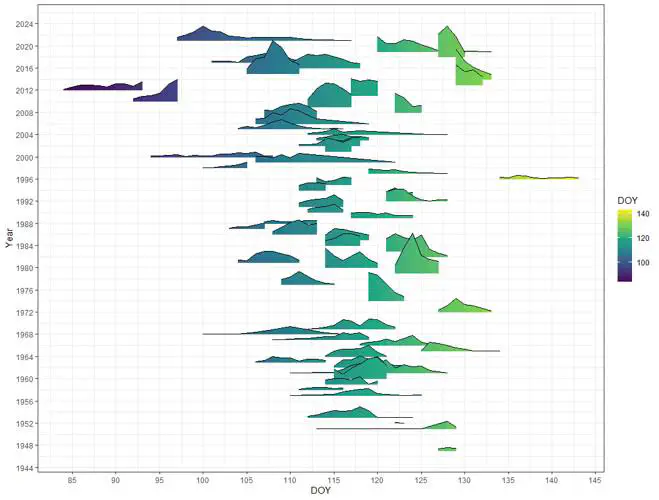New paper on walleye maternal effects in Fisheries Research

Check out our new paper in CJFAS about environmental triggers of spawning activity in walleye.
In our newly published article, we find that spawning activity of walleye in Escanaba Lake was more strongly driven by photoperiod than temperature. Walleye tended to spawn at a relatively narrow range of daylengths (13-14 hours, about the length of a late April day in northern Wisconsin), but across a wide range of water temperatures (5-15 degrees Celsius). This dependence on photoperiod answers the question about why walleye are not tracking climate-induced changes in ice phenology, and are becoming increasingly mismatched with spring conditions. In addition, we failed to find any consistent predictors of walleye recruitment, meaning conditions supporting (or eroding) recruitment probably vary in any given year. Collectively, this research suggests that walleye may not be able to adapt as quickly as our Wisconsin spring conditions are changing, which could threaten their long-term sustainability, and provides a nice mechanistic understanding of what drives their spawning activity.
Image: Catches of spawning female walleye over time in Escanaba Lake, WI.